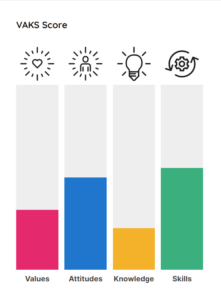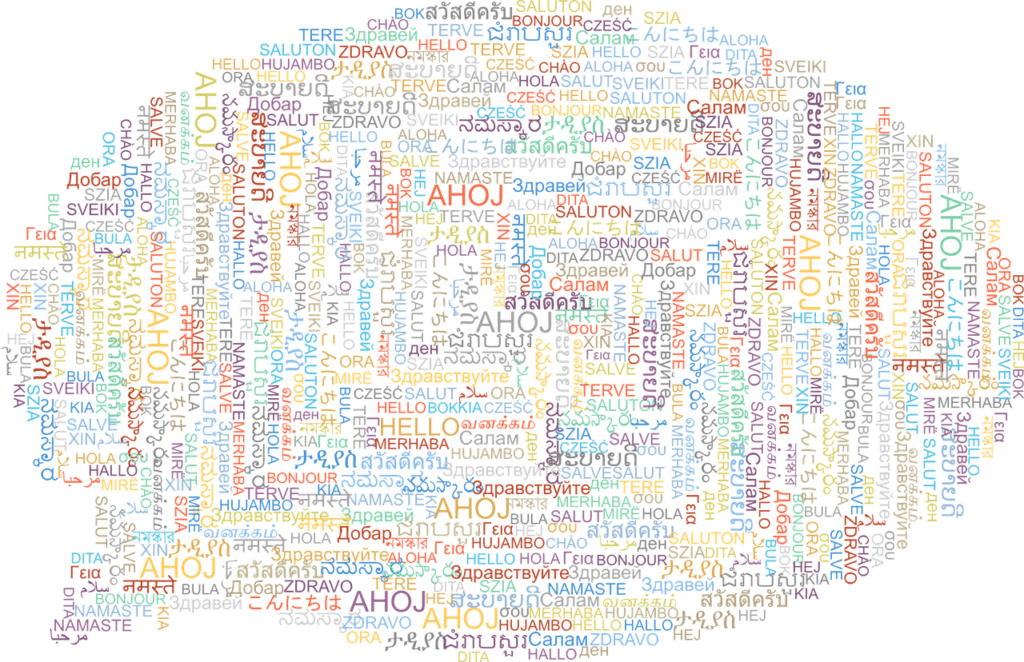Learning Objectives
- To reflect on global citizenship and multilingual pedagogies.
- To raise awareness of linguistic and cultural diversity.
- To reflect on your own identities in the local and global community.
Resources needed
- VAKS self-reflective tool.
- Internet access.
Warning!
You can try out all activities and excercises, but you can't save any data. Please login or create a free account to save your data.
Exercise 1: Global citizenship and multilingual pedagogies
This exercise will help you to reflect on your understanding of global citizenship and multilingual pedagogies. Please read these three quotes about global citizenship and select the one that resonates most with you.
In your own words, how would you explain the term global citizenship?
It is difficult to define global citizenship in one single straightforward definition as many people take different approaches and include diverse facets. In this project, we have chosen to work with the following three definitions:
TIP: Consider writing down on a post-it note your own current understanding of global citizenship drawing on elements from these definitions. You can put this in a place you see regularly such as on your desk. Although your understanding may change over time, it can be useful to reflect regularly on your definition and how this can inform your teaching.
Rating
- Having read the definitions of global citizenship, to what extent do you identify as a global citizen?
- To what extent do you feel that global citizenship is important for your teaching?
Reflecting on your current understanding of and incentives for implementing global citizenship in your teaching practices can help you to further understand these topics and think about the ways in which you could support your students to understand and appreciate global issues as the citizens of this world.
Multilingual competences
What is your understanding of multilingualism?
When we apply ‘multilingualism’ to teaching, we talk about multilingual pedagogy. Multilingual pedagogy can be described as a didactic approach, which aims to develop linguistic repertoires of multilingual individuals (Goltsev et al., 2020). However, “multilingual pedagogy should be regarded not as a unified methodology but as a set of principles that are used to varying degrees in different approaches depending on the teaching context, curriculum and learners” (Neuner, 2004, p. 27).
TIP: If you wish to learn more about multilingual classrooms, you may want to watch this video, in which Nell Foster from Ghent University in Belgium describes multilingual classrooms as the new reality in urban schools. Over time, it can be useful to reflect regularly on your definition and how this can inform your teaching.
Rating
- How multilingual is your school?
Global results (all votes)
- How multilingual is your school? (11 votes)
Now your personal reflections. Think about your environment:
Do you have a multilingual friend(s)? What language(s) do they speak?
Are you aware whether or how many of your students are multilingual? Do you know what languages are represented in your class?
Reflect on your colleagues at your school. Are any of them multilingual? If so, do you know which languages they use?
Noticing the extent to which we live in a multilingual environment helps us to become more sensitised to the diversity in cultures and languages around us. It avoids us making assumptions about what is the ‘norm’. Acknowledging and becoming curious about this linguistic diversity in your classroom can help you to form stronger relationships with your learners as well as with colleagues. Expressing respect for such diversity and developing an open, curious interest in multiple languages and cultures is a key step towards a facilitative attitude for multilingual pedagogies. We can embrace and appreciate diverse languages and cultures in our communities and model behaviours of openness and respect with our learners. A multilingual pedagogy implies making all languages welcome and valued within our classroom environments.
Exercise 2: Values, attitudes, knowledge, and skills (VAKS)
To keep track of your understandings of global citizenship and multilingual pedagogies, we recommend revisiting the VAKS tool

Complete the VAKS self-reflective tool. What are the areas in which you wish to develop further?
Do you have any particular goals you wish to achieve as you work on these modules?
As part of this project, we interviewed teachers and teacher educators from different countries across Europe who are already employing global citizenship and multilingual pedagogies in their teaching practices. Here are some of their reflections on what these approaches mean in practice:
To what extent do these teachers’ thoughts resonate with you and why?
Exercise 3: Stories
This link will take you to a TED talk by a Nigerian writer Chimamanda Ngozi Adichie.
She highlights that it is important to try to understand ourselves better and our place and roles in the local and global society. This also includes our position in the world as global citizens and speakers of different languages. She also emphasises the importance of understanding that we have developed perspectives or stories that we have come to believe are true about other people – these might be just our own knowledge, imagination, and interpretation from what we have heard or read. She emphasises that we can learn to question our perspectives and actively engage with other points of view by listening to or reading other stories to shape how we see the world as global citizens.
Having seen the video, what would you say is your story?
Now, take a few minutes to talk to a friend or a colleague, and ask them what they think about what your story might be and how they would describe you. Alternatively, if there are no people around you momentarily, take a few minutes and think about a person you have a close relationship with. What is their story? How would you describe them?
How is the other person’s story similar or different to yours?
Chimamanda Ngozi Adichie in her talk reminds us that “the single story creates stereotypes, and the problem with stereotypes is not that they are untrue, but that they are incomplete. They make one story become the only story” (2008, 12:49). In your reply to the previous questions, you could probably see some differences, but also similarities, in how you see yourself, how others might see you, and what they think your story might be.
Learning about and appreciating linguistic and cultural diversity in our communities is one way to value and give voice to others’ stories. As teachers, we are in a position to respect all types of diversity and guide students towards being able to do the same.

